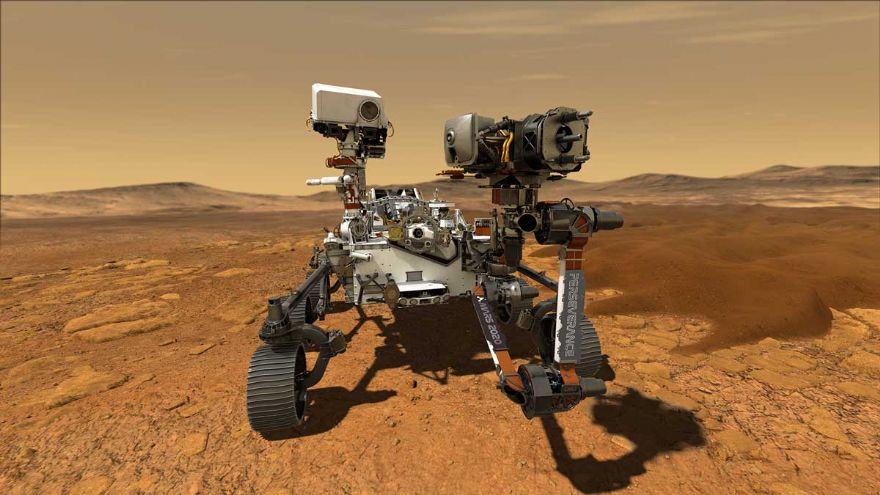
Launched on 30 July 2020 with an Atlas V rocket from NASA’s Cape Canaveral base in Florida, the Perseverance rover of
NASA’s Mars 2020 mission — part of the Mars Sample Return programme — reached the Red Planet on 18 February 2021, after a journey of 480 million km.
The most delicate part of the mission, described as the ‘seven minutes of terror’, was the entry of the descent module into the rarefied Martian atmosphere until a ‘Flying Sky’ crane gently deposited Perseverance on its six wheels into the Jazero crater — a former lake that is now dried up.
The rover will scour Mars in the coming years to collect soil samples that, for the first time in history, will be carried back to Earth where they will be studied and analysed in order to understand if Martian life ever existed. This project will be completed with two other missions, for which Italy will play an important role.
Perseverance will gather Mars soil samples in test tubes that will be left on the ground. A second NASA mission — in 2026 and in partnership with the
European Space Agency (ESA) — will recover them, thanks to two advanced robotic arms with high-tech mechatronics and flexible control structures that will be engineered by Leonardo at its Nerviano plant in Milan.
The two arms will have different functions and structures. The first, which will be small and agile with six degrees of movement and an ‘extension’ of up to 110cm, will be installed on ESA’s Sample Fetch Rover and will collect the soil containers.
The second arm, a stronger one with seven degrees of movement and an extension of over 2m, will be located on NASA’s Sample Retrieval Lander; it will move containers from the rover to the capsule, which will then be ‘launched into Mars’s orbit.’
The arms that
Leonardo is developing are ‘jewels’ of robotics and mechatronics. They will be able to operate autonomously (the delay of up to 20min of communications between Earth and Mars would not allow the arms to be managed in real time), identify containers with Martian soil, and choose the best trajectory to collect and store them.
The container with Mars soil will be sent in orbit by a small rocket that will be captured by another spacecraft, the Earth Return Orbiter, which will carry the samples back to Earth.
About the size of an SUV and powered by radioisotopes, Perseverance was also carrying a small helicopter, Ingenuity, when it landed. This will be the first aircraft to ever fly in the atmosphere of another planet.